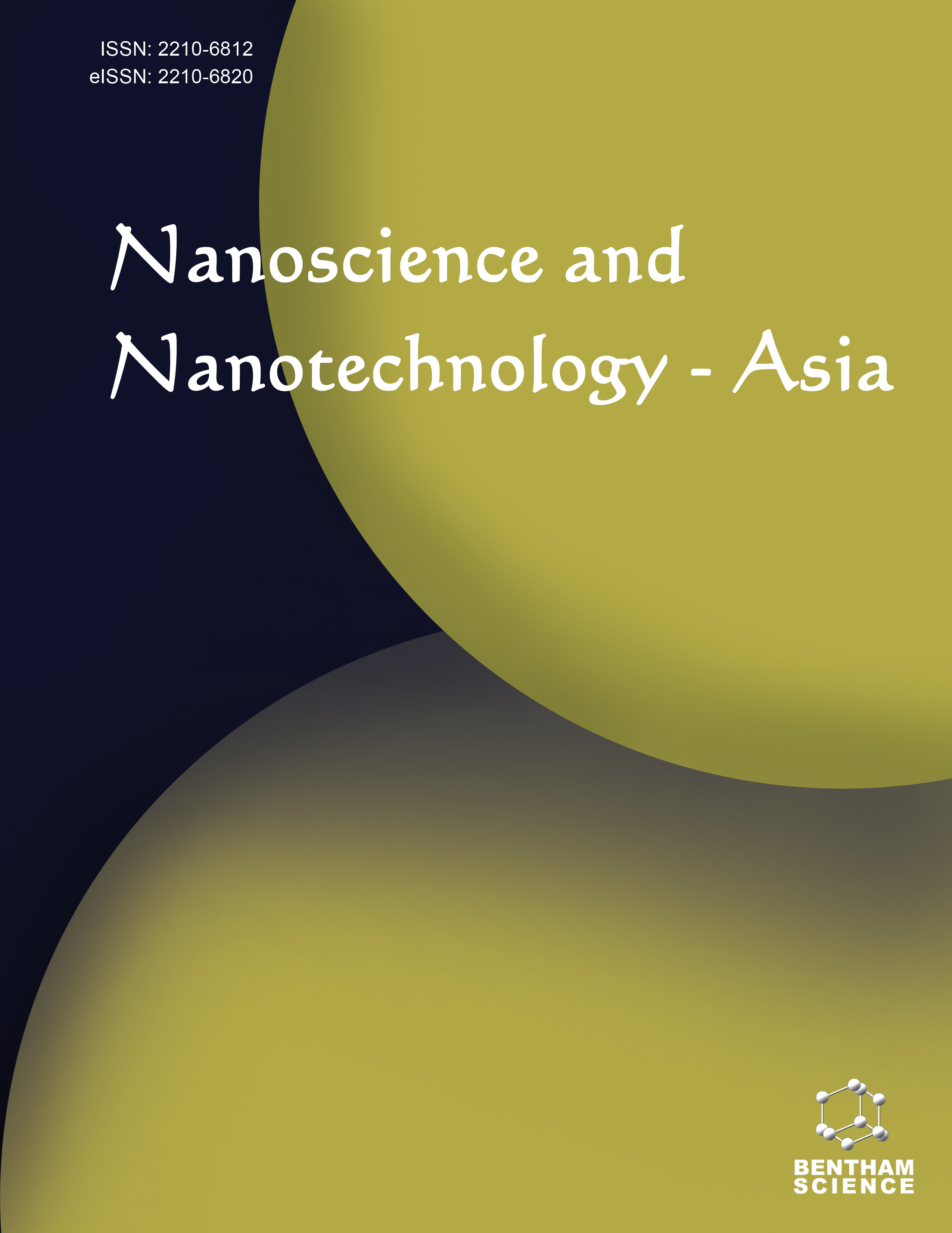- Home
- A-Z Publications
- Nanoscience & Nanotechnology-Asia
- Previous Issues
- Volume 11, Issue 5, 2021
Nanoscience & Nanotechnology-Asia - Volume 11, Issue 5, 2021
Volume 11, Issue 5, 2021
-
-
Colorimetric Detection and Adsorption of Mercury Using Silver Nanoparticles: A Bibliographic and Patent Review
More LessMercury (Hg) contamination is a problem that currently affects not only the environment but also human health. Various types of commercial adsorbents have been proposed for its removal. Silver is a noble element that can chemically adsorb mercury, forming amalgams. However, its use as an adsorbent presents the following disadvantages: rapid surface saturation and high cost. These limitations can easily be overcome Read More
-
-
-
A Closer Look to Polyesters: Properties, Synthesis, Characterization, and Particle Drug Delivery Applications
More LessAuthors: Katherine Pazmiño Viteri, Karla Sofía Vizuete, Frank Alexis, Brajesh Kumar and Alexis DebutBackground: Natural and synthetic polymeric materials can be used in the fields of biomedicine and pharmaceuticals as a material for controlled drug delivery. Among the synthetic polymers, polyesters are synthesized from two natural monomers: lactic and glycolic acid, which are biocompatible and biodegradable. Objective: Here, we review broad aspects of polyesters including its properties, synthesis, characteriz Read More
-
-
-
Stem Cells and Nanoparticles in Therapy
More LessAuthors: Viteri Marco, Toscano Fernanda, Gavilanes Alex, Torres A. Marbel and Seqqat RachidThe application of nanotechnology to stem cell research and development has made great strides during the last years. Nanotechnology offers a new opportunity for the research and development of stem cells. The mammary gland is a dynamic organ that undergoes extensive morphogenesis during the different stages of embryonic development, puberty, pregnancy, lactation and involution. There are multipot Read More
-
-
-
A Review on Metal Nanoparticles from Medicinal Plants: Synthesis, Characterization and Applications
More LessAuthors: Jincy A. George, Smriti Sundar and Kuppusamy A. PaariPlant extracts contain secondary metabolites which have the potential to act as reducing and stabilizing agents contributing to a greener and more efficient method to synthesize nanoparticles. Rapid growth of Nanotechnology has led to an increased demand in various fields. This review summarizes the use of potent medicinal plant extracts to synthesize metal nanoparticles, methods employed to characterize the proper Read More
-
-
-
Synthesis and Characterization of Heterogeneous Solid Acid Catalyst from Alstonia scolaris Stalks for Biodiesel Production using Waste Cooking Oil
More LessAuthors: Charishma V. S. Anne, Karthikeyan S. and Chelliah ArunBackground: Waste biomass derived reusable heterogeneous acid based catalysts are more suitable to overcome the problems associated with homogeneous catalysts. The use of agricultural biomass as catalyst for transesterification process is more economical and it reduces the overall production cost of biodiesel. The identification of an appropriate suitable catalyst for effective transesterification will be a landmark in th Read More
-
-
-
Fabrication, In vitro and In vivo Characterization of Solid Dispersion- Microsphere Controlled Release System for Lornoxicam
More LessAuthors: Suraj Nupane, Dipti Srivastava, Mohini Chaurasia and Himani AwasthiBackground: Lornoxicam is widely used for its anti-inflammatory, analgesic and antipyretic properties. However, it suffers from the limitations of possessing a relatively short elimination half-life ranging from 3 to 5 h, thereby; leading to repeated dosing which in turn may cause local irritation and ulceration. In addition, LXM also exhibits pH-dependent solubility. Effective management of inflammation in diseases such as arthriti Read More
-
-
-
Development of Antibacterial Xanthan/Chitosan Biguanidine Hydrochloride Polyelectrolyte Complexes Decorated with Eco-friendly Prepared Silver Nanoparticles
More LessAuthors: Hend E. Salama and Mohamed Samir Abdel AzizBackground: Novel eco-friendly silver nanocomposites of xanthan/chitosan biguanidine hydrochloride polyelectrolyte complexes were successfully prepared. Methods: Silver nanoparticles (AgNPs) were formed through an insitu eco-friendly reduction by the non-toxic polysaccharides without the usage of toxic reagents. FTIR confirmed the successful preparation of the nanocomposites while XRD confirmed the presence of AgNPs Read More
-
Volumes & issues
Most Read This Month
Article
content/journals/nanoasi
Journal
10
5
false
en


